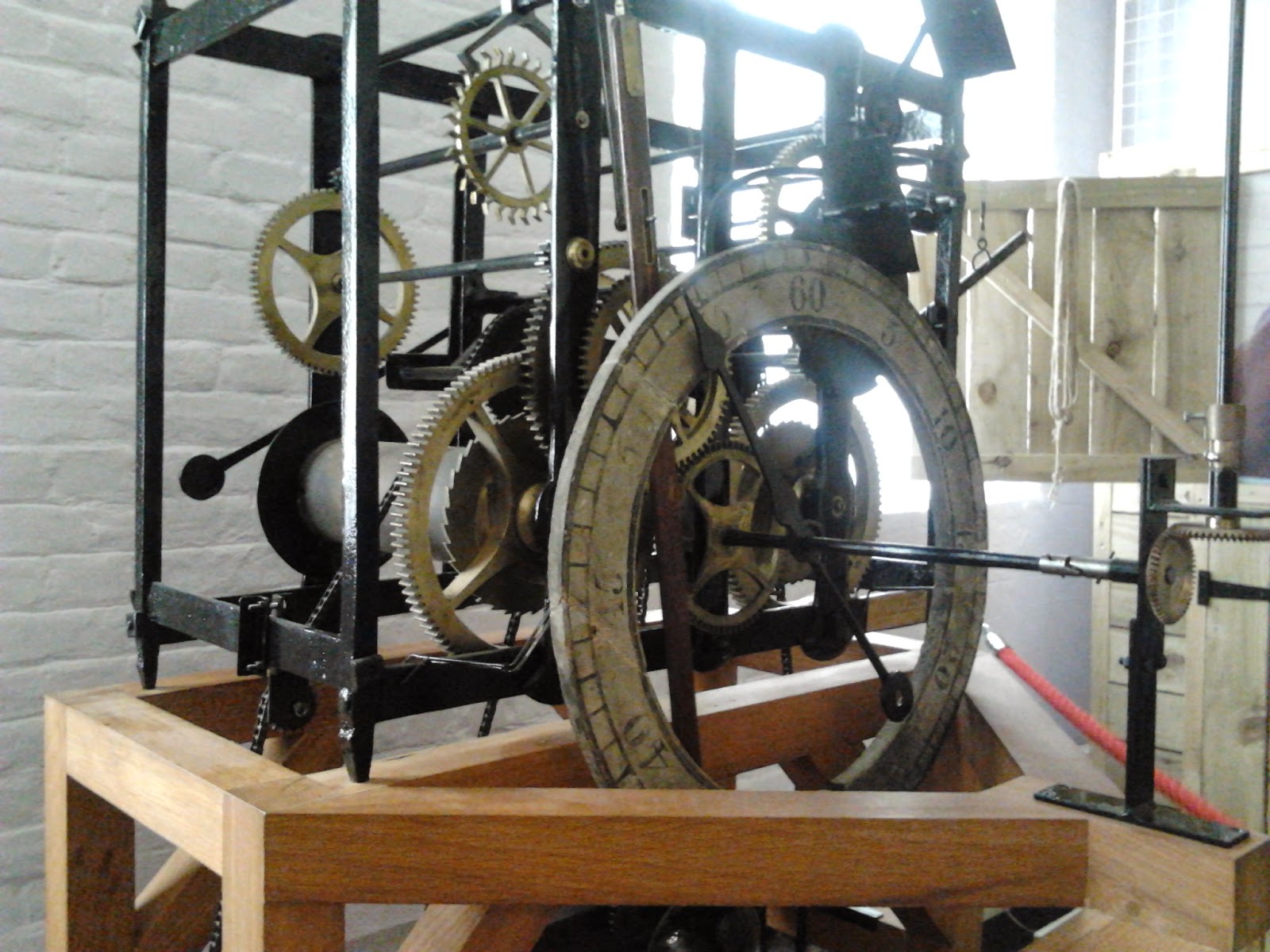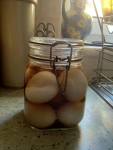The old workhouse, originally built as a House of Industry, is in a lovely red brick, and is quite simply enormous! The locals called it the Paupers' Palace when it was built and you can see why! This photo just shows one wing.
The Poor Law Amendment act of 1834 transformed the House of Industry into a Workhouse, and it meant a great deal of change - segregation and a lot of walls being built to keep the different parties separate. Families saw one another only for an hour on a Sunday afternoon. This yard now houses a collection of tractors and wagons from Norfolk, but it was the yard in which women did laundry in the early days.
This is the men's workyard looking one way.
And this is the yard looking the other way. A closed-in yard, with walls on all sides.
Men etched their names onto the brick wall on one side of the work yard. Names have been matched to records so that it is possible to date the names.
The FH's grandfather was born in a Norfolk workhouse, and it was interesting to find an alternative spelling of our name on a list of entrants to this particular workhouse, although it was not this one at which old William was born.
In the infirmary ward, we found these strange triangular beds. We wondered why they were triangular and then we read that this was simply in order to fit more beds in to the room! We haven't worked out why they sloped from the head to the foot, though - it doesn't look very comfortable.
This is the cafeteria yard now but it was the yard belonging to the "Itch Ward" - what a name! This separate building was used as a Fever ward at one time, and at another period, was the entrance ward, where new paupers were deloused, washed and re-clothed.
The steam laundry was one of the most up-to-date in Norfolk at its time and was in use until the early 1970s, I think. That little machine on the far left was used exclusively to wash the Matron's clothing - that didn't get mixed in with the rest!
These blue doors hid racks which slid out on rails and sheets and items could be hung to air on them. The words on the right were printed on to a sheet and say "If you listen carefully, you can still hear the echoes and voices of women who worked here" - we tried hard, but we couldn't.
The board of governors of the workhouse was a very important group of people, so they had a big room to have their meetings in - very imposing and grand in comparison to many other areas of the workhouse.
The internal workings of the workhouse clock. For people who had lived their lives by the sun, rising and going to bed in tune with the seasons, having to live according to a timetable dictated by a clock was a huge shock to the system for them.
There was a ward for six elderly couples called Cherry Tree Cottage, and this is the kitchen range.
This is the parlour of Cherry Tree Cottage. The wooden chairs are lovely and UJ still has some of those at his house - they are surprisingly comfortable and I could imagine toasting my toes by this fire. Rag rugs were everywhere at Gressenhall.
There was a row of shops, in some outbuildings, and this was a recreation of a local post office.
The grocery shop with all the old packets on the shelves.
And the garden supply shop - with boxes of seeds, including Painted Lady Runner beans which we still grow today. I thought of FrugalInSuffolk, and her smallholding at this point, when I was looking around this part of the display. There were some gorgeous little seed packets for flowers as well.
A huge display of gardening and carpentry implements and tools mounted on the wall.
One of a display of several different rugs - my grandmother had three of these in a very similar style in her kitchen when I was a child, and they were made of old wool items - incredibly durable.
We went for a lovely walk along the River Whitewater - the water takes 10 days to flow from here down to the sea at Great Yarmouth. It was picturesque and peaceful along here. We went on a tractor and trailer ride around the farm, which was busy, and horse and cart rides were also on offer, with a beautiful pair of Suffolk Punches pulling a cart, but the queue for that was far too long, so we went for the walk instead.
The chapel was built in 1868 with money raised by public subscription - it was originally just used by Church of England clergy, but the non-conformists also held services there as well eventually.
Walking down the central aisle from the back towards the altar, it is quite unnerving in that the floor slopes downwards and one feels it quite sharply. The decorated brickwork is attractive, and it was a lovely building.
We found this plaque in the original main building and it seems to embody the ethos of the first House of Industry on the site.
The smell of oil! This is one of Norfolk's oldest horseless carriages, the Panhard et Lavassor car, dating from 1899 and once owned by Charles Rolls [he of Rolls Royce fame]. It was donated to the Norfolk Museums Service in 1936. It has successfully completed the London to Brighton rally twice in the Nineties and is still taken out to shows occasionally.
Gressenhall was incredibly good value for us - I paid just £20 for four children and I to have a great day there, with lots to look at, to do and to find out. All the kids said they would go back there again, and it was very interesting. I did splurge and buy them an ice cream, but that was about it! We took packed lunches which we ate on the grass in the car park, and it was a fine day, so that was no problem. Highly recommended!





























































3 comments:
Fascinating, lovely photos and lots of information. Social history is just so absorbing, especially when we recognise items from our family's past. Thankyou so much for all the detail that you added, it sounds like a lovely day out. Vee x
It's one of those places where I would love to visit, but several miles from here
Our son will be based there for a while for his Eighth (Air Force) In The East Archaeology job. ( Or at least that was the plan originally but the job seems to be changing as it goes on)
As a child in the 1960s I remember it being used as a Council OAP home - and many of the elderly residents being distressed that they were ending their days in what they remembered as The Workhouse. It is a brilliant place for an informative visit. I love it there!!
Post a Comment